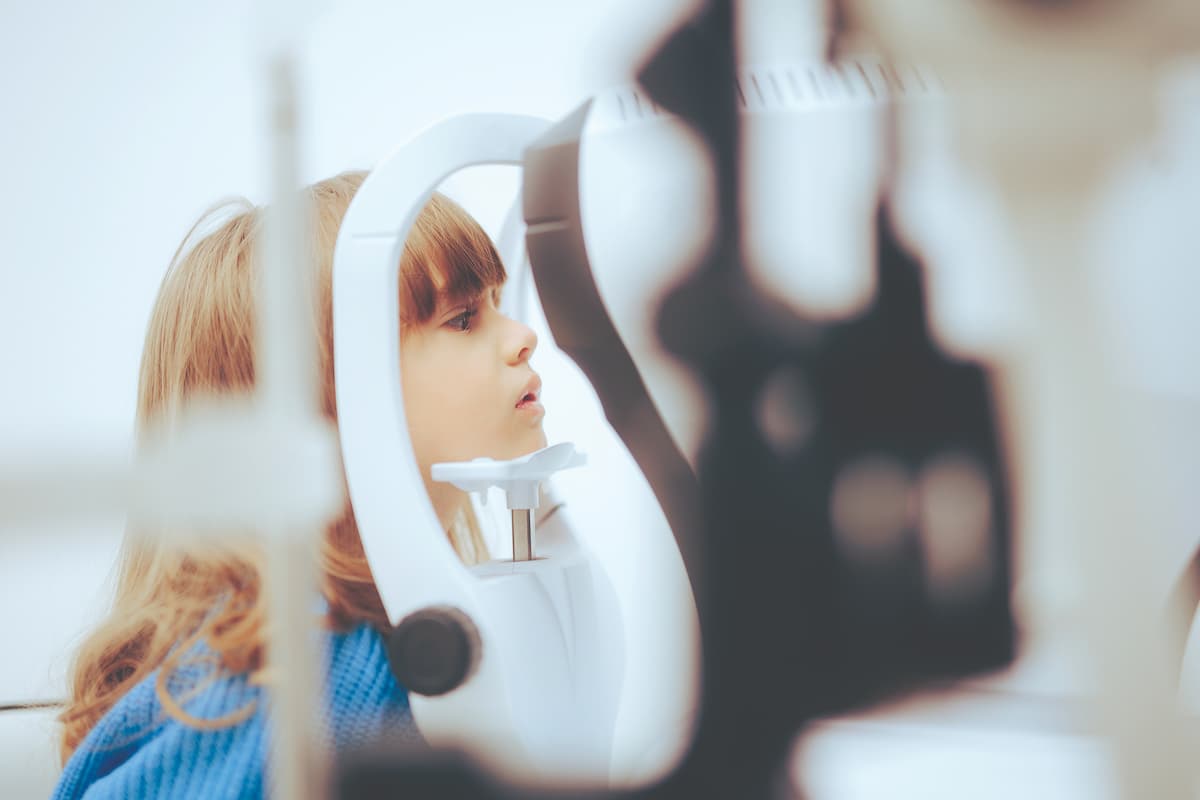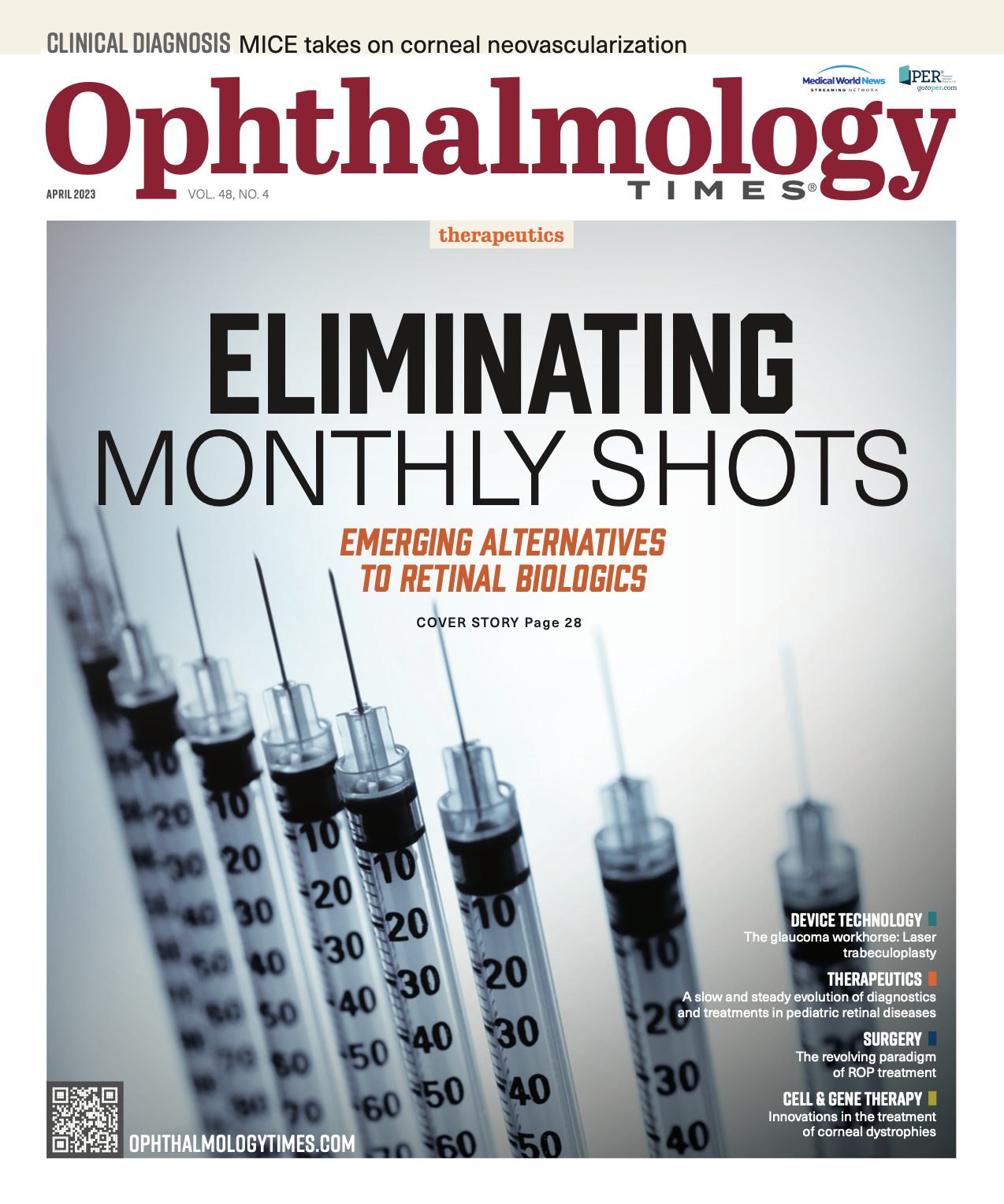Publication
Article
Digital Edition
Evolving diagnostics and treatments in pediatric retinal disease
Author(s):
Pros and cons of anti-VEGF drugs and improved visualization of abnormalities in ROP.
(Image Credit: AdobeStock)

Reviewed by Mary Elizabeth Hartnett, MD, FACS, FARVO, FASRS
Improvements in diagnosis and treatment are slowly being made in pediatric retinal diseases, which historically have received less attention and funding than other areas in ophthalmology.
Mary Elizabeth Hartnett, MD, FACS, FARVO, FASRS, professor of ophthalmology, and the Michael F. Marmor, MD, Professor of Retinal Science and Disease at Stanford University, in California, described the status of diagnostic technologies and treatments in retinopathy of prematurity (ROP) and other disorders.
Better diagnostics
The evolution of imaging in the clinic has facilitated a more precise diagnosis of the stage and zone of ROP. Although most patients with ROP remain untreated, those with type 1 (stages 2 and 3, often with plus disease) are treated immediately to preserve vision, Hartnett pointed out.
Wide-field imaging (WFI), which visualizes the retina in most eyes almost to the ora serrata at the periphery of the sensory retina, was a major breakthrough in diagnostics. It has been available for a while, but its capabilities continue to be appreciated in this patient population.
The beauty of WFI, Hartnett explained, is that it requires only 1 or 2 shots, thus eliminating the extreme brightness and lengthy exam time associated with indirect ophthalmoscopy in babies and young children, and that the images can be analyzed quickly.
Wide-angle fluorescein angiography (FA), with the dye ingested, injected or performed under anesthesia, allows for the visualization of retinal abnormalities and offers a better look at vascular anomalies that may not be visible during clinical evaluation.
“This has been a game changer for diagnosing/detecting conditions such as Coats disease and familial exudative vitreoretinopathy,” Hartnett pointed out.
In patients with Coats disease, for example, wide-angle FA has expanded the clinician’s capabilities. Prior to its use, vascular abnormalities could be observed, but peripheral retinal areas of avascular retina could not, she said. This capability facilitates scatter laser treatment of avascular retina and focal laser treatment of vascular abnormalities. Previously, children would undergo an examination under anesthesia and cryotherapy about every 4 months, whereas a single laser application guided by wide-angle FA may suffice. In higher stages of Coats disease, additional treatments may be required.
Treatment modalities
Anti-vascular endothelial growth factor (anti-VEGF) drugs are the most recent and important addition to the ROP armamentarium. Laser still has a place in treatment, but interestingly, analysis of data from the safety trials of anti-VEGF medication is shedding more and more light on their effectiveness in ROP.
Hartnett’s laboratory provided proof of concept that anti-VEGF drugs reduced excessive angiogenesis and facilitated normal angiogenesis in experimental models representative of ROP, an unexpected finding for an anti-angiogenesis agent.1 Harnett noted clinical cases of infants treated with anti-VEGF agents for ROP also found reduced extraretinal neovascularization and some vascularization of the peripheral avascular retina.
“This happens because the anti-VEGF agent binds VEGF in the vitreous and reduces the amount available to activate VEGF receptors on endothelial cells,” Hartnett observed. “In essence, this leads to regulation of the VEGF signaling pathway and allows dividing endothelial cells to be oriented so that they form linear vessels that extend out to the ora serrata rather than disordered vessels that extend into the vitreous.”
Investigators are studying many factors that may support vascularization of the peripheral avascular retina, including nutrition, reduced inflammation and other stresses, and molecular events.
The known advantages of anti-VEGF drugs are potential expansion of the visual field and reductions in the development of myopia. The cause of myopia in these patients remains unknown but seems to be related to lens thickness and corneal curvature, whereas laser treatment of ROP appears to be associated with higher degrees of myopia, Hartnett theorized.
From meta-analyses, it seems that anti-VEGF agents should be strongly considered for zone 1 disease (type 1 ROP), the most posterior form of ROP, because of their efficacy and potential to increase visual fields. In zone 2, type 1 ROP, in which developmental vascularization has extended to around the equator of the retina, informed consent is needed to discuss laser application or anti-VEGF drugs, which both appear to be beneficial.
The disadvantages of anti-VEGF drugs include potential safety problems. “VEGF is not only an angiogenic factor but also [a] protective factor of glial and neural cells in the retina and the brain,” Hartnett said. There are also studies that suggest effects on other organs, and more study is needed.
A retrospective analysis of a large prospective study from the Neonatal Research Network (NRN) published in 2019 compared the effects of anti-VEGF drugs and laser and other treatments on neurocognitive development. After adjusting for a number of confounding factors, investigators concluded that the risk of death was greater with anti-VEGF injections, but that there was selection bias, given that infants considered for anti-VEGF agents are often the most fragile and already at risk.2
Laser treatment is longer in duration and more stressful to the infant than anti-VEGF agents. It is nevertheless essential to obtain the desired drug formulation and concentration and use a sterile technique when delivering these agents.
In contrast, smaller retrospective studies have not identified safety concerns.3
“The large studies may have selection bias, and the small studies may have sample size issues,” Hartnett noted. Thus, the jury is still out and clinicians are waiting for results from major clinical trials.
Erythropoietin
High-dose erythropoietin, which is used to treat anemia of ROP was tested in the PENUT study for neurocognitive outcomes. At 2 years, no difference was found in neurocognitive testing or in ROP.4
However, Hartnett advised that the effects of erythropoietin should still be evaluated over the long term, and in the eye as well. In experimental animal models, her laboratory found that erythropoietin was useful and perhaps neuroprotective to the retina after hypoxic vascular damage caused by high levels of oxygen.
A smaller clinical trial also showed that a derivative of erythropoietin was associated with better cognitive outcomes in school-aged children.5
“I would like to see continued testing of erythropoietin over the long term for large-scale clinical trials,” she said.
The Genetics of ROP
Hartnett and her colleagues conducted a candidate gene study of mainly Black NRN patients. She reported that variants in brain-derived neuroprotective factor were associated with severe ROP.6 Future studies might consider effects of race or ethnicity on ROP susceptibility and how the disease manifests.
When considering ROP worldwide, clustering of cases may be possible. However, Hartnett also pointed to differences in the resources dedicated to perinatal and prenatal care around the world; for example, low-income countries may lack the technology to appropriately regulate oxygen, have poor prenatal nutrition, and their facilities may have limited staff to ensure that infants are not receiving levels of oxygen that are too high. In some cases, clinicians may tend to raise the oxygen level in an apneic babies, with detrimental effects.
Low-income countries are beginning to have the ability to save premature babies who previously would have died, but they may lack the resources to provide optimal care and sufficient ophthalmologists to screen for ROP and perform indirect ophthalmoscopy.
Impact of Technology
Telemedicine is helping to close gaps in care in these countries and wide-angle cameras can be used to obtain images.
“Newer and newer imaging modalities are being developed, including wide-angle optical coherence tomography [OCT]. This will be important because the resolution is so much better, and [it] enables better visualization of blood vessels than a fundus image,” Hartnett explained. “In addition, the light in the OCT instrument is not as bright as [that of] the indirect ophthalmoscope.”
The additional details that better visualization provides raise questions about ROP treatment. Hartnett suggested that more visible details may result in overdiagnosis of ROP and perhaps treatment of less severe stages, which raises the question of whether it is better to treat earlier.
Another yet unanswered question is how treatment with anti-VEGF drugs affects VEGF levels in the bloodstream of developing infants. An ongoing difficulty is the inability to measure VEGF levels in the vitreous of infants to begin understanding how much VEGF is too much and how much anti-VEGF agent is needed to neutralize detrimental effects.
Hartnett is also focused on what she calls “vision for life,” that is, eliminating the gap in care when children move from pediatric to adult practices. Children with ROP may not be followed by an ophthalmologist with a background in the disease, for instance, and the same may be true of inherited retinal diseases, glaucoma, and other ophthalmic disorders.
“Much progress has been made since ROP was first recognized and high oxygen found to be a causative factor,” she said, noting that even smaller and younger premature infants are surviving, new stresses are being recognized as involved in the pathophysiology, and physicians’ ability to diagnose, image, and treat vision-threatening disease is improving.
“More work is needed in research as neonatology pushes the boundaries of survival changing the appearance of ROP, and as infants grow to adulthood…[when] specific features of…ROP interact with changes associated with aging,” Hartnett concluded.
Mary Elizabeth Hartnett, MD, FACS, FARVO, FASRS

Mary Elizabeth Hartnett, MD, FACS, FARVO, FASRS
E: me.hartnett@stanford.edu
Hartnett has no financial interest to declare in relation to this subject matter. She receives research funding from NEI/NIH as the principal investigator of R01-EY015130-10 and R01-EY017011-14.
References:
1. Simmons AB, Bretz CA, Wang H, et al. Gene therapy knockdown of VEGFR2 in retinal endothelial cells to treat retinopathy. Angiogenesis. 2018;21(4):751-764. doi:10.1007/s10456-018-9618-5
2. Natarajan G, Shankaran S, Nolen TL, et al. Neurodevelopmental outcomes of preterm infants with retinopathy of prematurity by treatment. Pediatrics. 2019;144(2):e20183537. doi:10.1542/peds.2018-3537
3. Barnett JM, Hubbard GB. Complications of retinopathy of prematurity treatment. Curr Opin Ophthalmol. 2021;32(5):475-481. doi:10.1097/icu.0000000000000783
4. Juul SE, Comstock BA, Wadhawan R, et al; PEANUT Trial Consortium. A randomized trial of erythropoietin for neuroprotection in preterm infants. N Engl J Med. 2020;382(3):233-243. doi:10.1056/NEJMoa1907423
5. Ohls RK, Kamath-Rayne BD, Christensen RD, et al. Cognitive outcomes of preterm infants randomized to darbepoetin, erythropoietin, or placebo. Pediatrics. 2014;133(6):1023-1030. doi:10.1542/peds.2013-4307
6. Hartnett ME, Morrison MA, Smith S, et al. Genetic variants associated with severe retinopathy of prematurity in extremely low birth weight infants. Invest Ophthalmol Vis Sci. 2014;55(10):6194-6203. doi:10.1167/iovs.14-14841

Newsletter
Don’t miss out—get Ophthalmology Times updates on the latest clinical advancements and expert interviews, straight to your inbox.





